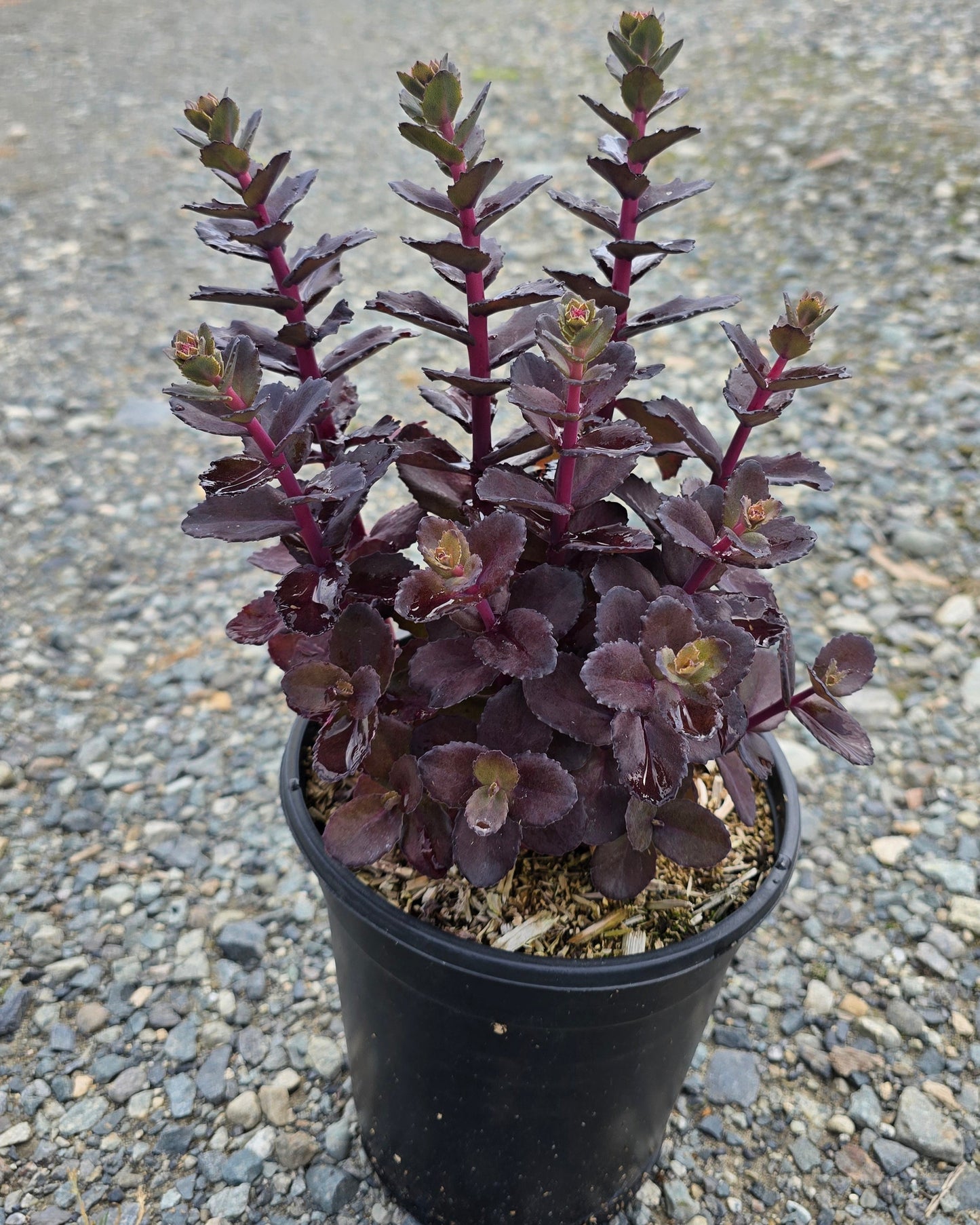– Spring: foliage emerges with intense dark coloration
– Summer: flower buds develop; foliage deepens in tone
– Late summer to fall: full flowering and peak ornamental value
– Winter: seed heads and dark stems provide structure if left standing
– Dense, domed clusters of rosy pink to magenta flowers
– Bloom begins in late summer (August) and continues into early fall (October)
– Flowers contrast boldly against the dark foliage, creating high-impact garden presence
– Strong, upright stems resist flopping under flower weight





